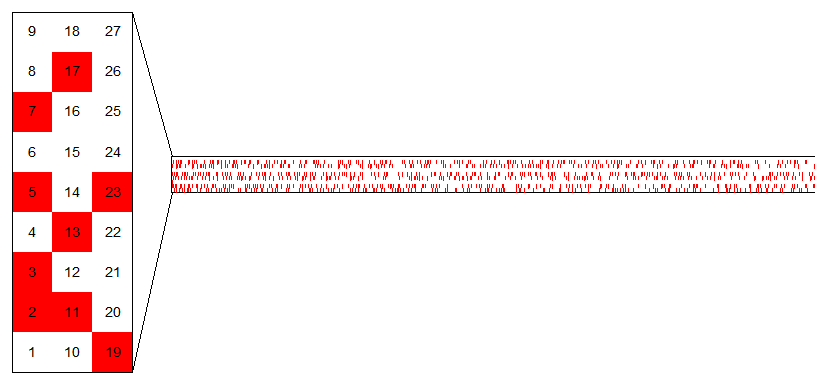A Lesson in Primes
- eyeofthestorm4
- Jan 28, 2022
- 4 min read
In today’s math classes, teachers offer a regimented math curriculum, instead of presenting the cool side of math that kids might be more interested in. There are many beautiful and meaningful mathematical concepts that we’re not being taught in the classroom.
In this article, I will give a wondrous example of how math can be fun and useful for daily life. Specifically, I want to discuss one of the most br
illiant and underappreciated mathematical concepts: prime numbers.
Prime numbers are counting numbers that can only be divided by themselves and the number one, such as 2, 3, 5, 7, 11, 13, 17, 19, 23, and 29. Most people see them as plain old numbers you multiply together to generate other numbers, but primes are so much more than that.
First of all, primes are used in the RSA encryption that keeps your devices and favorite websites safe. Primes are therefore extremely important for daily life. This is simply one example of one important fact about primes.
The process of using prime numbers for encryption is fairly straightforward; pick two prime numbers, say 11 and 17, and keep them secret. Now multiply these two primes to give you some number N - our example gives us 187.
Now pick some number e that shares no common factors with N; I picked 7. Now these two numbers - 187 as N and 7 as e - are your public key, so feel free to publicize them to the world. But how can one use these keys to send an encrypted message?
Say I wanted to send you the answer to the ultimate question of life, the universe, and everything: 42. Sorry, only fans of The Hitchhiker’s Guide to the Galaxy will appreciate that reference; let’s just say I wanted to send you the number 42. How do I encrypt it?
First, I raise 42 to the power of e, then I divide the result by N and find the remainder. In our example, 42 raised to the power of 7 is a very big number: 230,539,333,248. Once I divide this number by 187, I’m left with a remainder of 15. Once I send 15 to my recipient, now he or she can decrypt it.
But how? That person, of course, must know my public key (the values for N and e) but also my original two prime numbers (which I’ve kept secret from the world). Once they know that, they can use an RSA Key Generator online to calculate a new value called d. This step is complicated, but if we put the values for our secret primes (11 and 17), and our public e (7) into a generator, we’ll get a new value for our d: 23.
Now we take our encrypted message (15) and multiply it by itself 23 times (our value for d). Then we take that very, very big number, divide it by N (187) and take the remainder. That will give us the number 42!
Another interesting fact about primes is that there is no efficient way to generate all the prime numbers in existence. Mathematicians have been searching for years for some fundamental pattern to the primes,but to no avail. While no underlying order has been found in the primes, there have been some theories that suggest such an order actually exists.
Specifically, the Prime Number Theorem posits that there is some underlying structure to the primes. It states that, for any number, you can calculate the number of primes below that number. The Theorem will not tell you what those primes are; merely how many exist.
If you want, you can discover a cool visual pattern on paper by using primes (you can see an example of this in the diagram above that accompanies this article). First, pick a non-prime number. Then create columns in a grid equal to that number. Then assign a number to each square, starting in one corner, working down a column and then completing the next column.

Now color in all squares that have prime numbers. Step back from your grid and you’ll notice that some of the rows have no colored squares whatsoever. In the example below, the top row and the row 3 spaces below it have absolutely no primes. Mathematicians have proven that this pattern will continue on into infinity.
There are more visual patterns you can find online.These patterns suggest that primes are useful in a visual, artistic way, but they are also a complex organized system of numbers that may have undiscovered applications as well, such as breaking the RSA ciphers which could lead to disastrous results for security.
I would like to close with the fact that the only known number greater than ten that appears in nature that is also a prime number is the life cycle of Cicadas, which is 13 or 17 years; they follow prime cycles in order to avoid predators who also follow cyclical patterns. This is just another great fact about primes that piques my interest.
These are the reasons I find primes fascinating and all mathematics beautiful. There are many great facts and application surrounding primes, and their importance should be highlighted in school curricula. I truly hope I have sparked your interest in prime numbers and mathematics as a whole.

Comments